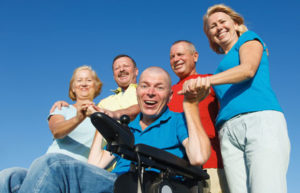For people with physical disabilities, home safety requires unique considerations. If we look at the statistics on fires alone, we find estimates of dozens of death and hundreds of injuries annually among those with physical disabilities. There are also other home safety issues to consider, including home invasions and medical emergencies.
The following are four important tips on home safety for those with physical disabilities. These can serve as a good starting point for improving your safety at home.
1) Map out your optimal escape plan
If you have a physical disability, consider how you would exit the home in the event of a fire. Is your bedroom on the ground floor? Do you have multiple exit routes lined up from any room in the house, and do any of them have major obstacles (for example, stairs)? Be sure to practice using your escape routes during fire drills to see if they’re safe and feasible.
2) Make sure you can perceive alarms
If you have a hearing impairment, how can a home alarm, including a fire alarm warn you about a problem? There are different options to consider, including alarms with flashing lights. In addition, you can set up an alarm system that’s monitored round-the-clock and that can immediately notify the proper emergency response personnel (along with trusted family members or friends) about a problem in your home.
3) Carry a wireless “panic button”
Always carry with you an emergency alert button (“panic button”) that you can use to summon police or medical first responders in the event of an emergency, such as a fall.
4) Review your home for hazards in advance
With the help of family, friends, and/or professional caregivers, make a comprehensive safety assessment of your home to spot potential hazards. For example, are any doorways too narrow for a wheelchair – potentially trapping you when you try to escape your home? Is the kitchen optimized for your use, reducing the chances that you’ll suffer burns or start a fire when you cook?
Don’t hesitate to contact us for further assistance with improving your home safety. We can help you come up with solutions tailored uniquely to your home and to the specific challenges posed by a variety of physical disabilities.







